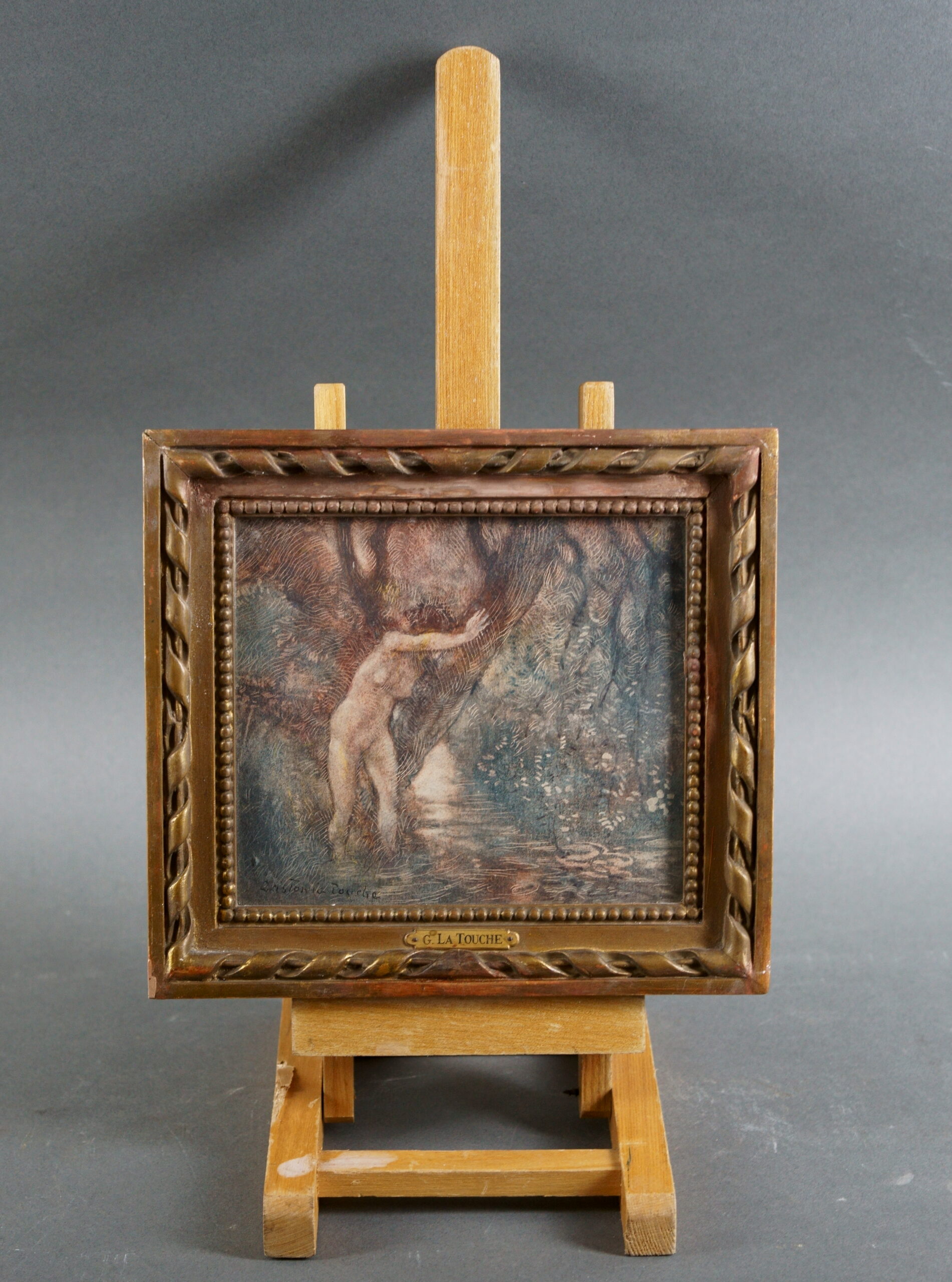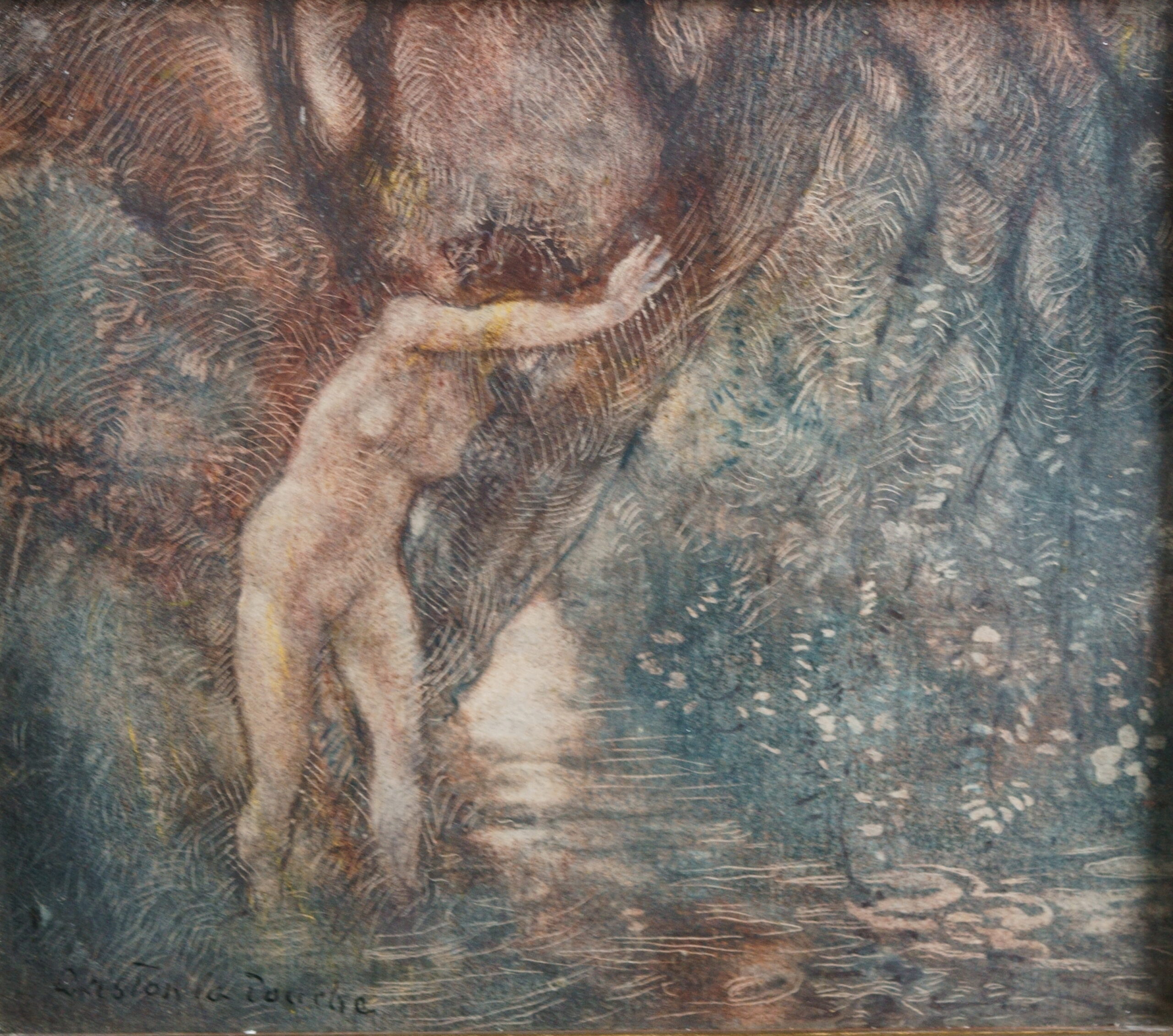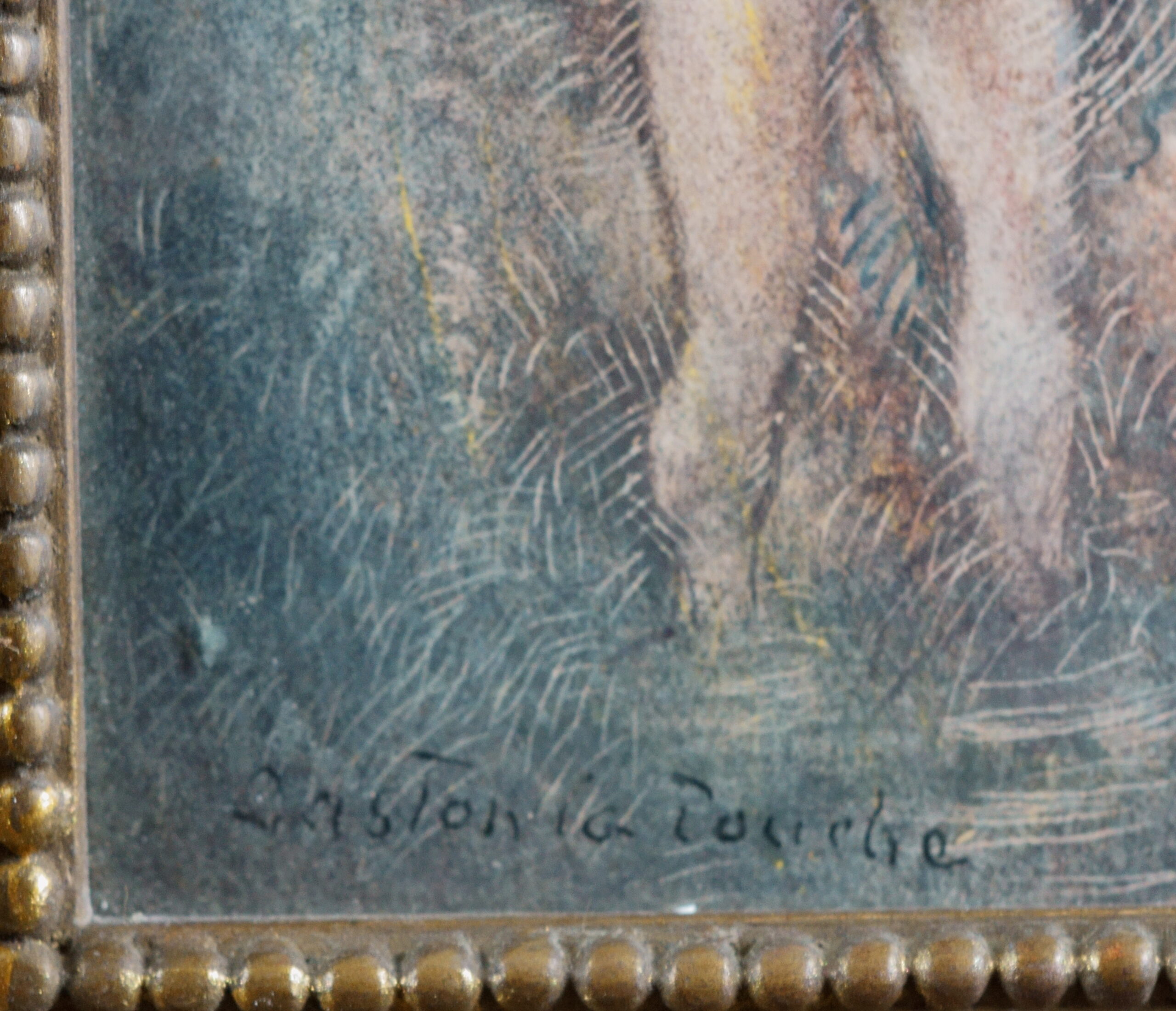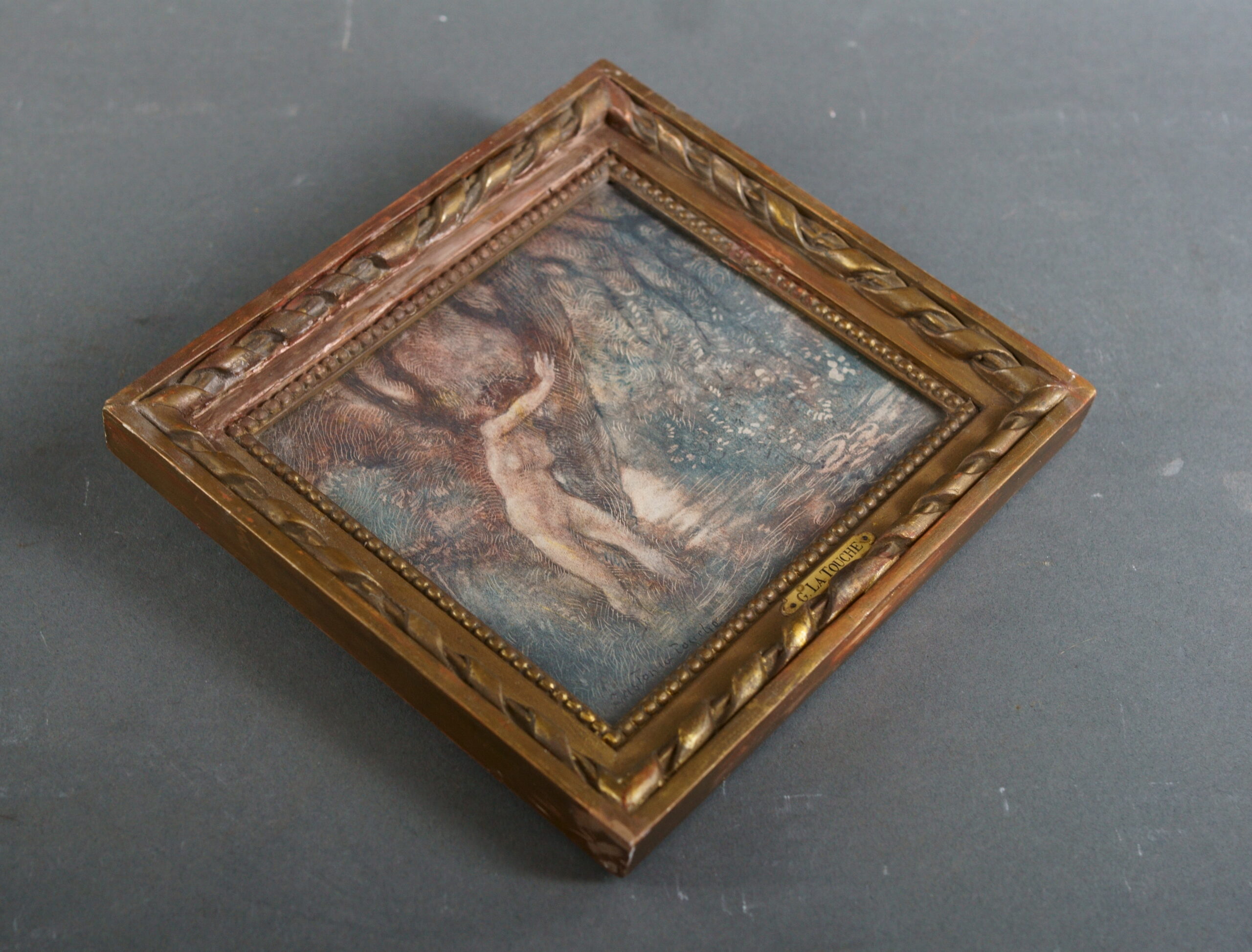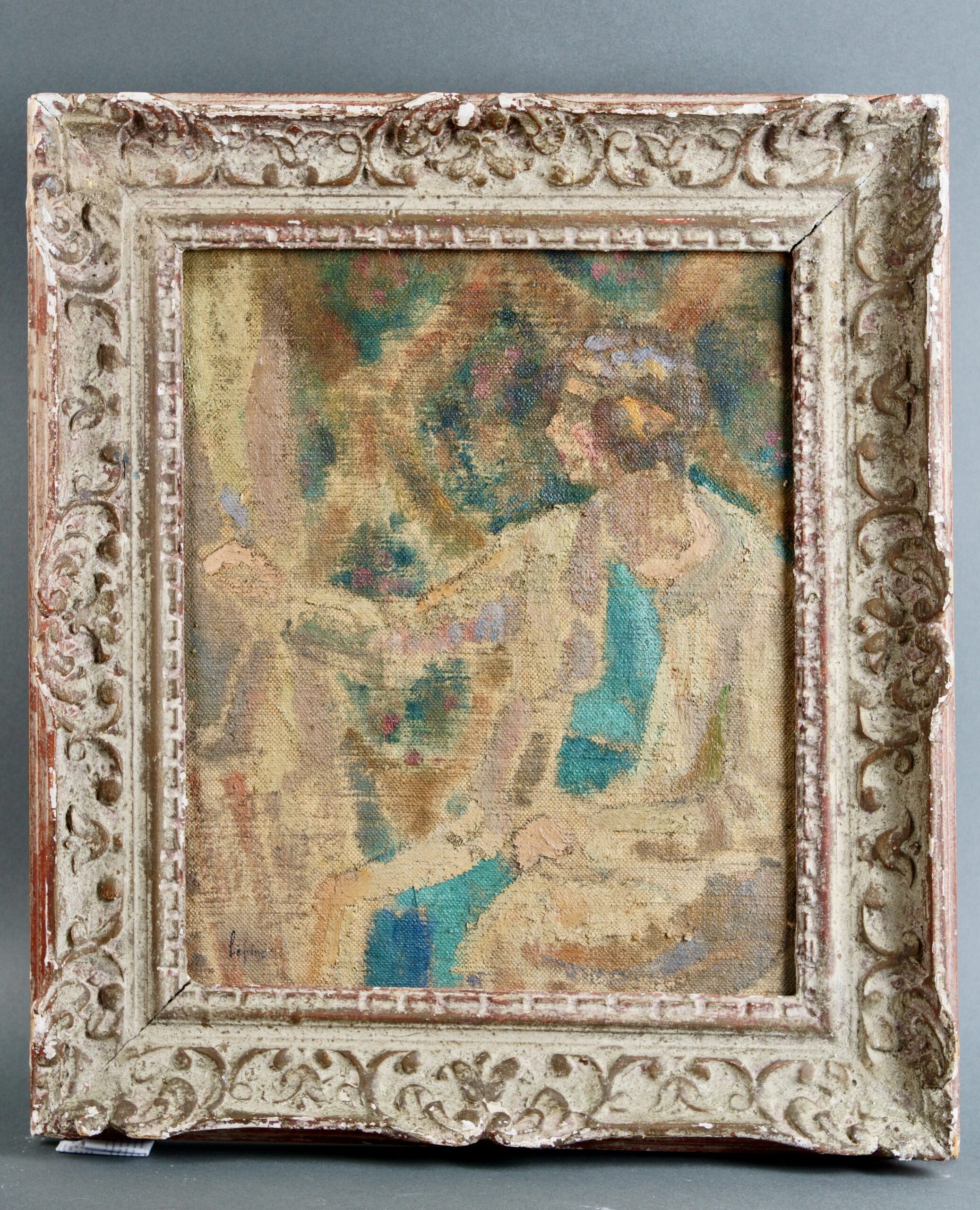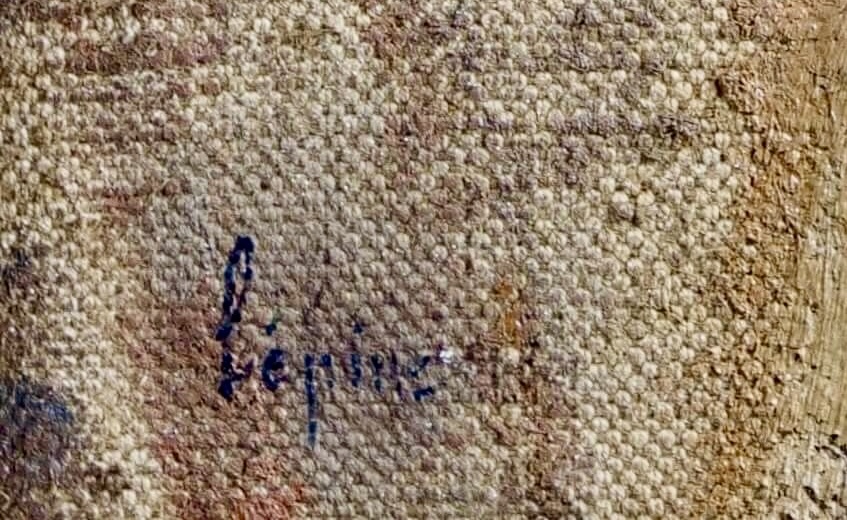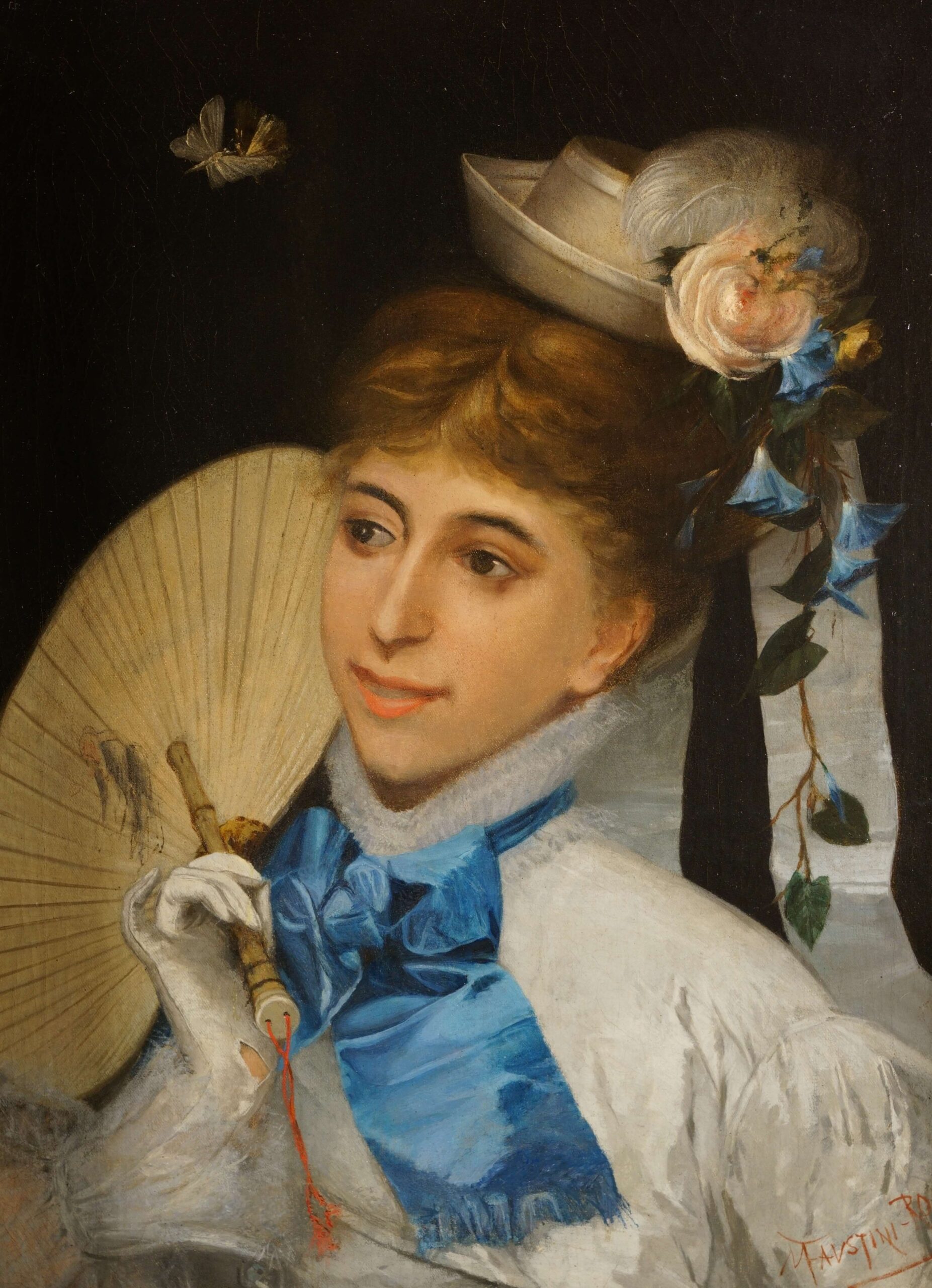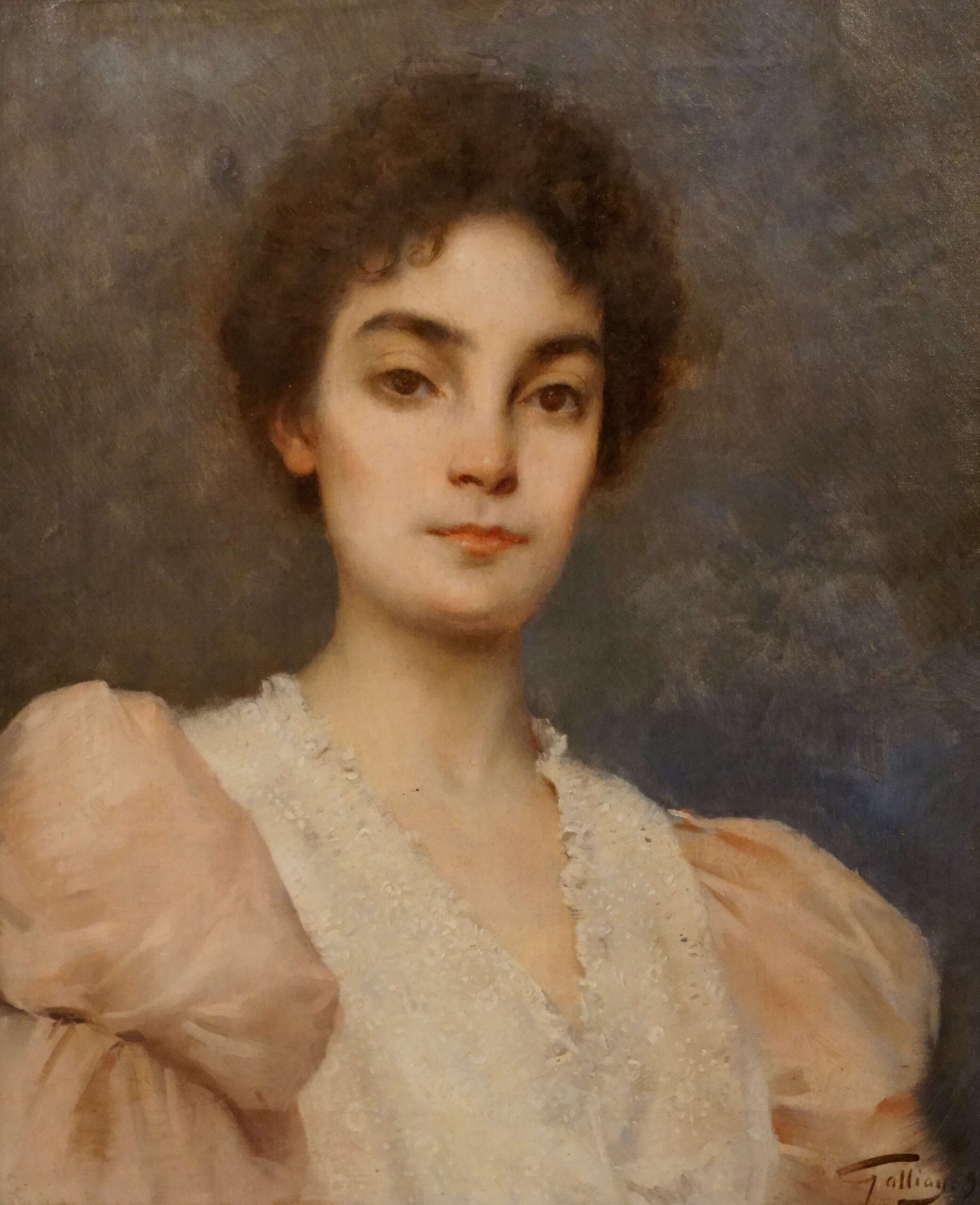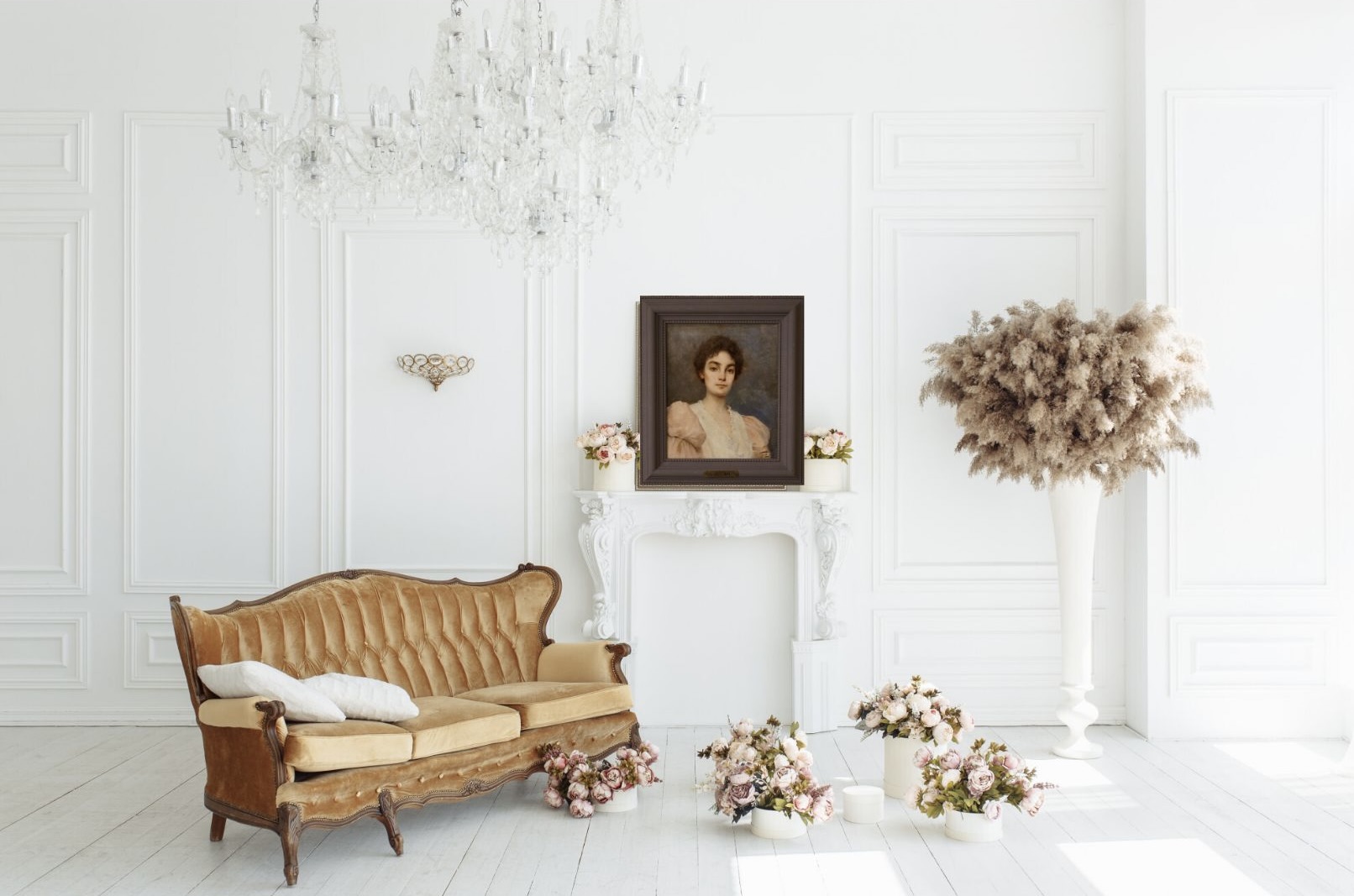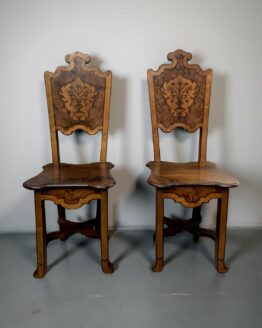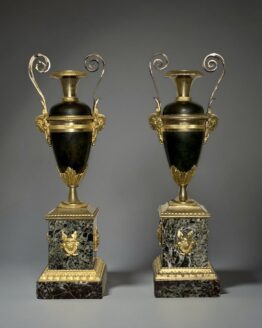“Nymph in the forest” watercolor on paper signed Gaston La Touche.
Gaston de La Touche (1854-1913), also known as Gaston La Touche, is a French painter, engraver, illustrator and sculptor.
Born in Saint-Cloud in 1854 from a family originally from Normandy, Gaston La Touche shared his life between his Clodoaldian house and the Gros-Douet estate in Champsecret in Orne which he inherited from his mother. Self-taught, he embarked on artistic practice against the advice of his parents and exhibited at the Salon des Artistes français in 1874 in the sculptures section. It is ultimately the painting that he will choose. His career can be divided into two main periods. The first period, which can be described as “realistic”, is marked by the influence of Emile Zola (1840-1902) – whose Assommoir he illustrated in 1879: the themes chosen are scenes from the daily life of the classes popular, black interiors reflecting the poverty of this century like Kitchen Corner (oil on canvas, private collection, London) and L’Accouchée (oil on canvas, 1883, private collection, London). At this time, he frequented the artists of the Café de la Nouvelle Matthieu and met in particular Edouard Manet (1832-1883), whose student for a time he considered becoming. We ultimately know relatively little about the works of this period, the artist himself having chosen to destroy a large part of them by fire.
Gaston La Touche’s change of style indeed seems quite radical. From the 1890s, he began producing luminous paintings on more joyful themes, which appealed to the public. This renaissance corresponds to the painter’s decisive meeting with the engraver Félix Bracquemond (1833-1914), his almost neighbor (Bracquemond lived in Sèvres), whom he considers his master and to whom he pays homage in a double portrait preserved at the Musée d’Or. ‘Orsay (Bracquemond and his disciple, 1906, oil on canvas). La Touche is one of the first artists to exhibit at the new Salon of the Société Nationale des Beaux-Arts, of which Bracquemond is one of the founders. His career took on new momentum with subjects that corresponded to the tastes of Belle Epoque society: scenes inspired by gallant paintings of the 18th century and spectacles of the worldly and elegant life of Paris and Saint-Cloud. Like his contemporaries, he is interested in theater interiors, as in his painting L’Entracte (oil on canvas, private collection) which clearly transcribes the elegance of Parisian theaters around 1900.
La Touche is also a keen observer behind the scenes, of the intimacy of couples and of romantic feelings, for example in Le Pardon, ou l’éternel lie (Oil on panel, private collection, London) where a woman receives apologies from a man kneeling before her. Imbued with his attentive observation of nature and the environment in which he evolves, the artist paints “from inspiration” creating paintings with a sometimes fantastical side. Inspired by Perrault’s tales (Le Mariage de Riquet à la houppe, oil on canvas, Musée d’Orsay), he also represents scenes straight out of his imagination (La Rencontre au port, oil on canvas, 1897, town hall of Saint Cloud). Humor is not absent from his paintings when he uses the image of the monkey used by Watteau and Chardin, to parody the role of the painter (The Genius Painter, or The Famous Painter, oil on panel, private collection, London ). It is with another animal recurring in his exterior scenes, the swan, that La Touche expresses melancholy and death in the Black Swans and the White Swans (oil on canvas, 1894, Marie de Saint-Cloud) having belonged to Madame Gounod, widow of the famous composer.
The painter’s work thus appears very varied, the common point of his works after 1890 being color. A beautiful yellow light emanates from his paintings, even in the darkest ones like the Swans. His mastery of color is also perceptible in the live studies, a series of colored sketches that the artist had exhibited during his lifetime and which had struck the critics of the time (Studies, oil on panel, private collection, Paris). This series of landscapes continues in View of Paris – The Eiffel Tower (oil on canvas, 1899, private collection, London) and Chartres Cathedral (oil on canvas, 1899, Oise departmental museum) including the lighting effects are reminiscent of Monet. There is a spontaneity in these paintings that is not found in his more accomplished and dense interior paintings.
Colorist artist, La Touche also demonstrates perfect mastery of watercolor and pastel. His works in these techniques have an evanescent side which corresponds perfectly to the subject evoked, spiritual (The Carrying of the Cross, watercolor and gouache, 1893, Reims, Saint-Niaise church) or fantastic.
These works also bring him closer to symbolist artists – even if he rejects this term. This is exactly what we can observe in our watercolor, where the fantastical subject of a young nymph hidden behind a tree brings to life a glimpse of the forest veiled in evanescent mist.
The beautifully preserved watercolor still has its original frame bearing the label “G. La Touche”.
Measures
Watercolor cm 15.5 x 14
Frame cm 20.5 x 19



